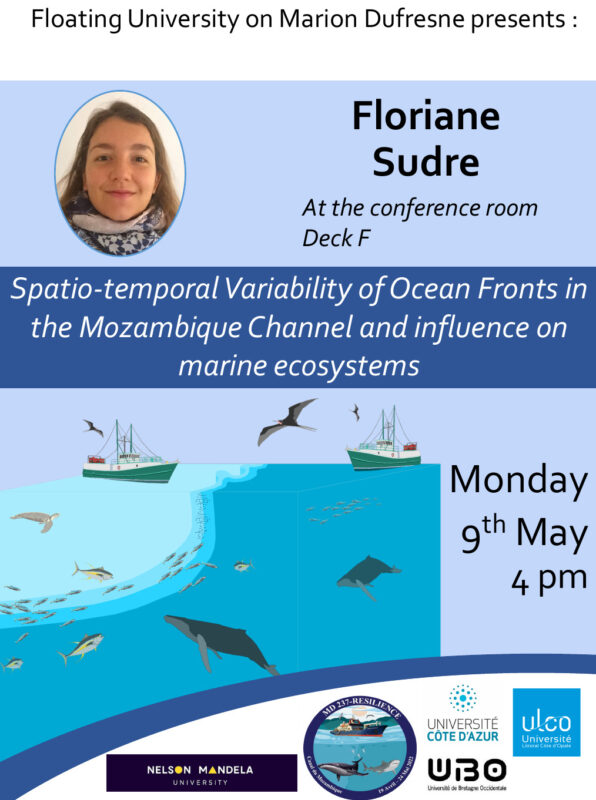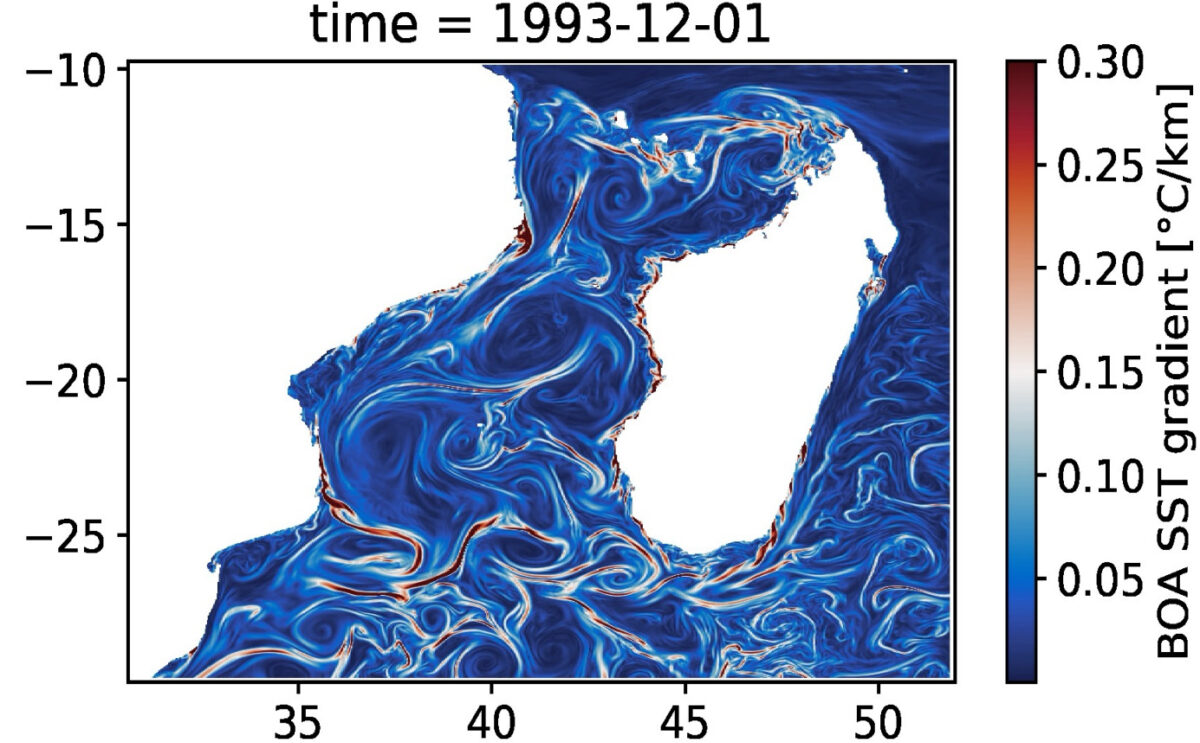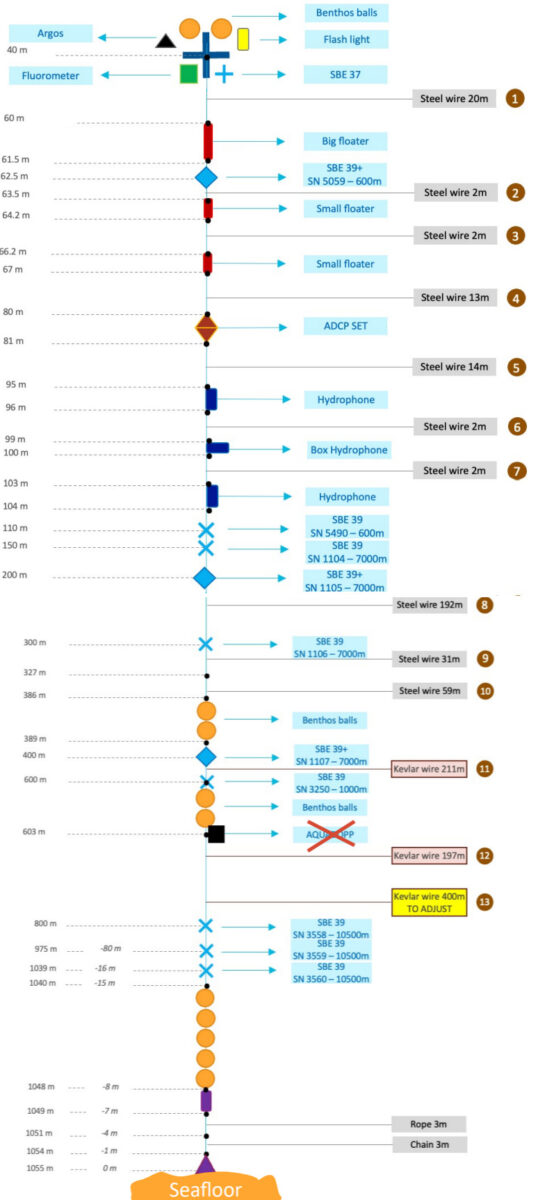Conference by Floriane Sudre – Spatio-temporal variability of ocean fronts in the Mozambique Channel and influence on marine ecosystems

May 9th, 2022, R/V Marion Dufresne, Mozambique Channel
Authors: Luis Chomienne & Illona Ribot
Floriane Sudre is a PhD student at the Mediterranean Institute of Oceanography working on ocean fronts. Her thesis is part of the multidisciplinary Ocean Front Changes project. The project aims to find out how fronts affect marine life and what’s the influence of climate change on fronts, all by keeping ties with the fishermen, various stakeholders and NGOs.
So, what is a front? Fronts are located at the border between two water masses with different properties, such as temperature, salinity or density. For example, sea surface temperature (SST) fronts lie at the frontier between colder and warmer waters. Front zones are ephemeral ecosystems where biological production is high which attracts many predators such as seabirds, sharks or marine mammals. Thus, fronts attract many fishermen, explaining the importance of keeping in contact with them.
The first part of the RESILIENCE oceanographic cruise was taking place in the Mozambique Channel. In this narrow region, the South Equatorial Current (SEC, figure 1), comes in from the north of Madagascar and reaches the Comoros Islands, creating many instabilities and generating eddies which continue their way south until they join the Agulhas Current.


Floriane studies the seasonal variability of thermal fronts by using a historical ocean model, covering 1993 to 2014. She considers fronts as those who have a gradient higher than 0.05°C per km, some of them can go up to 2.3°C per km! Thermal fronts are more intense and more frequent along the continental shelf, at the edge of the eddies and geostrophic currents of the Mozambique Channel.
The Mozambique Channel is divided into four distinct regions (Figure 1) which have different seasonal variability (Figure 3). Firstly, there is the Comoros Islands and the Northern Mozambique Channel (NMC). These two northern regions are strongly influenced by the monsoon, with the North-East Madagascar Current generating (anti-cyclonic) eddies and an upwelling zone near Angoche. The two southern regions correspond to the Southern Mozambique Channel (SMC) and the Agulhas zone. They are characterised by a strong current (South East Madagascar Current) from the Indian Ocean generating eddies (mostly cyclonic) and by two upwelling cells to the south of the island of Madagascar.
These results have been published in the international peer-reviewed journal “Frontiers in Marine Science”1,2.


On board, we obtained in situ data (along sections that cross frontal structures) will complement model output and satellite data in our understanding of front variability and their use by marine life. The multi-sensor mooring, placed in the channel during the scientific cruise in order to remain there for several months, was designed and built at MIO by V. Rossi, J.-L. Fuda and H. Glotin. It will be able to gather data on a vertical profile from 1056 meters of depth up to the surface with several instruments, including:
- 10 CTDs for salinity, temperature and density measurements which will, when all gathered together provide a vertical profile of hydrological data;
- 2 ADCPs used to measure the water velocity using acoustics (with one aiming upward and the other one downward in order to obtain data on the whole water column);
- 1 fluorometer to measure chlorophyll concentration near the surface;
- 2 hydrophones to record marine mammal positions.
All these tools will thus give a holistic view of the bio-physical interactions in the marine environment.
1 Sudre, F. et al. (2023) « Spatial and seasonal variability of horizontal temperature fronts in the Mozambique Channel for both epipelagic and mesopelagic realms » Frontiers in Marine Science, 9. doi:10.3389/fmars.2022.1045136
2 For further information, please contact V. Rossi and F. Sudre.
 Attention, vous utilisez un navigateur peu sûr !
Attention, vous utilisez un navigateur peu sûr !